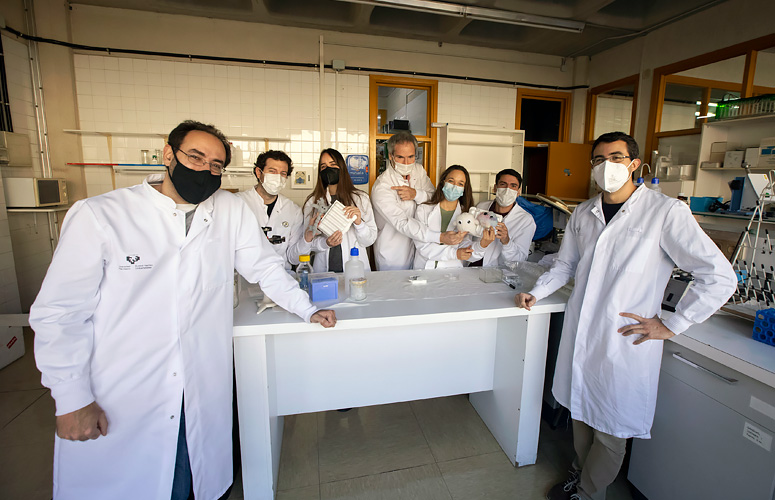Controlling and directing neural growth using nanostructured polymeric scaffolds
Nanostructured scaffolds produced induce aligned migration of stem cells and accelerate their neuronal differentiation
The collaboration between different research groups of the UPV/EHU, and other institutions, among them ACHUCARRO, achieved a promising advance for future cell therapy: nanostructured scaffolds based on bioresorbable polymers and graphene derivatives that induce aligned migration and accelerate the neuronal differentiation of neural stem cells. This system has the potential to restore the connectivity of spatially oriented neural precursor cells and is a promising tool even in nerve tissue regeneration.
The regeneration of the nervous system remains a major challenge due to its limited plasticity and poor ability to heal and recover function after injury. Research is therefore needed to develop effective strategies for guided neural regeneration and the restoration of lost nerve connectivity. In the field of neural tissue regeneration, it is essential to source and optimise biomaterials that meet the complex requirements of this specific biomedical application.

Fruit of a collaboration between the Department of Cell Biology and Histology of UPV/EHU and scientists of Achucarro Basque Center for Neuroscience and POLYMAT – The Basque Center for Macromolecular Design and Engineering, a significant advance in cell therapy has been achieved: “We have constructed bioresorbable elastomeric matrices or scaffolds that combine an ordered nanostructured topography (by way of grooves)together with surface functionalisation with graphene derivatives” explained Dr Aitor Larrañaga, an expert in the design and characterisation of nanomaterials.
These scaffolds have enabled “neural stem cells to attach to each other without the need for any other adhesive coating on their surface. Neural stem cells are able to differentiate themselves on the nanostructured scaffolds in vitro, which promotes their aligned migration in cell clusters by following the nanostructured grooves“, added Dr José Ramón Pineda, an expert in the field of stem cells.
Bibliographic reference:
Yurena Polo, Jon Luzuriaga, Jagoba Iturri, Igor Irastorza, José Luis Toca-Herrera, Gaskon Ibarretxe, Fernando Unda, Jose-Ramon Sarasua, Jose Ramon Pineda, Aitor Larrañaga Nanostructured scaffolds based on bioresorbable polymers and graphene oxide induce the aligned migration and accelerate the neuronal differentiation of neural stem cells Nanomedicine: Nanotechnology, Biology and Medicine
